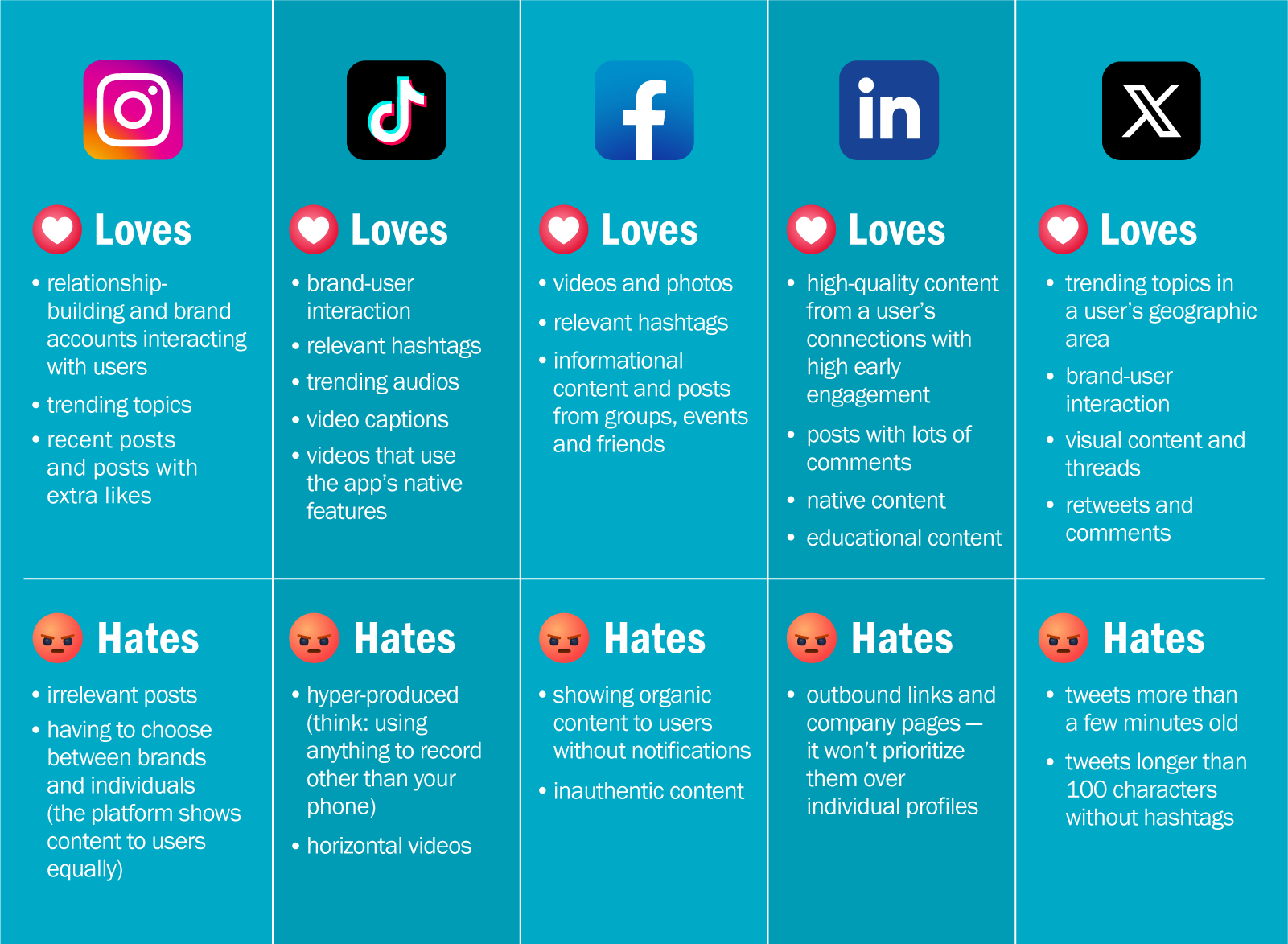How to Create a Social Media Guidebook
The blueprint for platform success
We’re well past the time when having a social media presence was an option; it’s a necessity in today’s marketing landscape. With billions of users around the globe, platforms like Facebook, Instagram, X and LinkedIn offer unmatched potential for reach and engagement. But if you don’t have a clear strategy, navigating the complexities of social media can be daunting. That's where the magic of a guidebook for effective social media management comes into play!

While a social media policy covers how your employees and brand behave on social media, your social media guidebook details what your brand will look like. Serving as a single reference point, a well-crafted guidebook can focus your social media efforts and help maintain consistency across platforms. From outlining best practices to offering platform-specific strategies, this resource isn’t just for the seasoned pros. It’s also a lifesaver for newbies finding their footing in social media management.
Where to start?
The journey of creating your own social media guidebook begins with a strategic approach. Step one is understanding your brand’s audience and objectives. You may think you have a handle on your audience— who they are, what they love and where they hang out online. But it never hurts to gather data and create personas for a more complete picture.

To continue developing your strategy, make sure you’re well-acquainted with your brand’s objectives and know the personality you want to showcase on platforms. When your social media efforts match your brand's goals and identity, you'll build a strong and effective presence that connects with your audience.
Elements to include in your guidebook
Now that we’ve established the importance of understanding your audience and objectives, let’s dive into the different components you should consider when crafting your guidebook:
1. Platforms
Which platforms does your brand use? Include the platforms best for your target audiences, plus a quick explanation of why. If you have more than one account on a platform, note it here. And make sure you include hyperlinks for digital versions of the guidebook.

2. Branding guidelines
These guidelines maintain consistent branding and identity across platforms, making it easier for your audience to recognize and engage with your content. Providing instructions on brand profile pictures, cover photos, tone of voice and hashtags helps establish a cohesive online presence.
3. Best practices per platform
Your Instagram presence should be discernable from your X presence. Take the time to list how each platform is used and what makes it stand out from the others. Consider what makes each platform unique and adjust your content accordingly to give your audience a distinct and interesting experience on each one. Check out our guide for posting on each platform:

4. Copy guidelines
Do you use emojis? Are there any words you tend to avoid? Any jargon you want to cut out? Inclusive language you should mention? Note it all here. Listen to your audience and adjust your language to make sure it's clear, inclusive and speaks to the people you want to reach.
5. Hashtags
Research hashtags you want to use for each platform and categorize them by Brand (hashtags specific to your company), Community (hashtags used frequently by your audience), Industry (hashtags used for content within your industry) and Miscellaneous (campaign hashtags, specific-use hashtags, etc.). Specify when to use each one and how many to use per post.

6. Content categories
Name the types of evergreen posts you create per social platform and describe each one. Ideally, someone new to posting on your company’s social media channels can look at this and have a good idea of where to start with their first couple of posts. For example, a furniture company may alternate between product photos, UGC and branded educational content on how and why their furniture is ethically made.
7. Sample content per platform
Show labeled examples of potential posts per platform. What makes the posts effective? Is the logo in a specific spot? Note any hashtags, imagery, use of words or other important elements on each one. Having a successful example to follow will make crafting posts in the future more efficient.
8. KPIs
What metrics will you use to measure the success of your posts on each platform? Set specific goals for factors like engagement, reach and conversions. By outlining clear objectives, like increasing likes or shares, you can track these metrics consistently over time and gauge their effectiveness.

9. Audience engagement
Your social media policy guidelines establish how to handle bad behavior in the comment section. The guidebook determines how to engage with the audience through efficient community management. How often will you check the comment section? What mentions and tags will you track through social listening? How will you respond to positive or neutral comments to foster a positive perception of your brand?
10. Crisis response plan
In a crisis, you may find your comment section blowing up and social media managers scrambling to respond. Designate ahead of time what team(s) will handle PR and how employees will communicate quickly internally before posting anything externally.
11. Copyright guidelines
It’s tempting for stressed-out social media managers to rip a visual from Google Images, but that’s a big no-no for copyright laws. Explain how to access images and videos for commercial use and dictate where employees can find preapproved, original company visuals for posts if needed. Include guidelines here on audio, too, especially for TikTok and Instagram videos.
12. Content guidelines
While you can’t get too specific regarding online behavior, spell out precisely what is and is not acceptable for social media employees to post on company accounts, including no hate speech, no profanity, no classified information, spelling/ grammar requirements, etc.
13. Post-approval process
Only certain people in your company should have access to the social media channels. Designate a method for suggesting posts to the social team and a procedure for social-specific employees to submit posts for final approval before they go live. Everything should be double- or even triple-checked before it’s posted!

14. Social media glossary
If someone is brand new to the world of social media, this guide should make it easy for them to get started. To avoid confusion during internal strategy meetings, include a list of social media-related words, acronyms and jargon your team uses most often and their definitions.
Evolve and update over time
Keeping your social media guidebook fresh and updated is crucial to staying relevant online. As trends shift and platforms introduce new features, you should adapt your strategies appropriately. Regularly revamp your guidebook to align your tactics to evolving industry standards. Don’t wait for your social strategies to become outdated — take a proactive approach to stay ahead of the curve. Watch for emerging trends and experiment with innovative ideas to keep the creativity flowing and your audience engaged!
Ready to take your platform presence to the next level? Creating a solid guidebook is just one factor in conquering social media management. Whether you're looking to boost engagement or collaborate with influencers, our social team is ready to support you every step of the way. Contact us to start enhancing your social strategy!